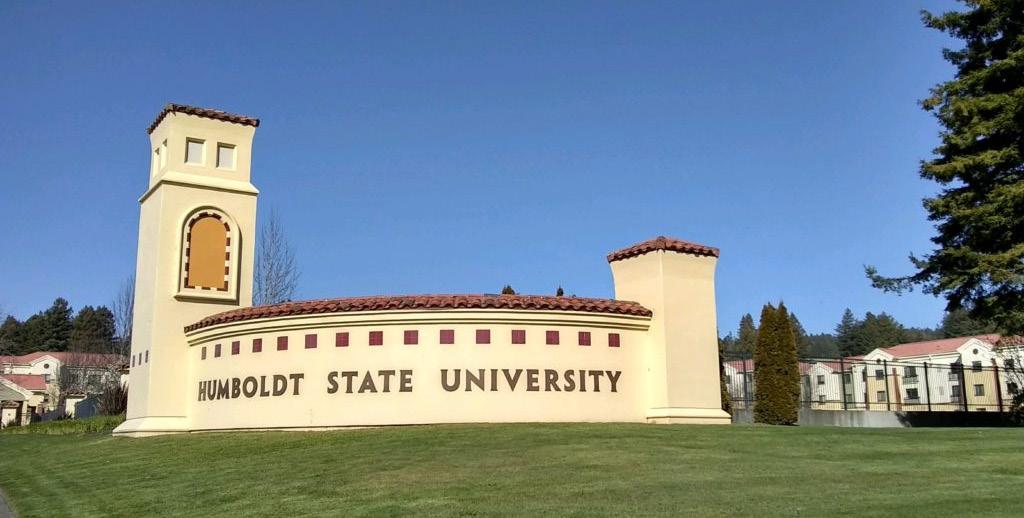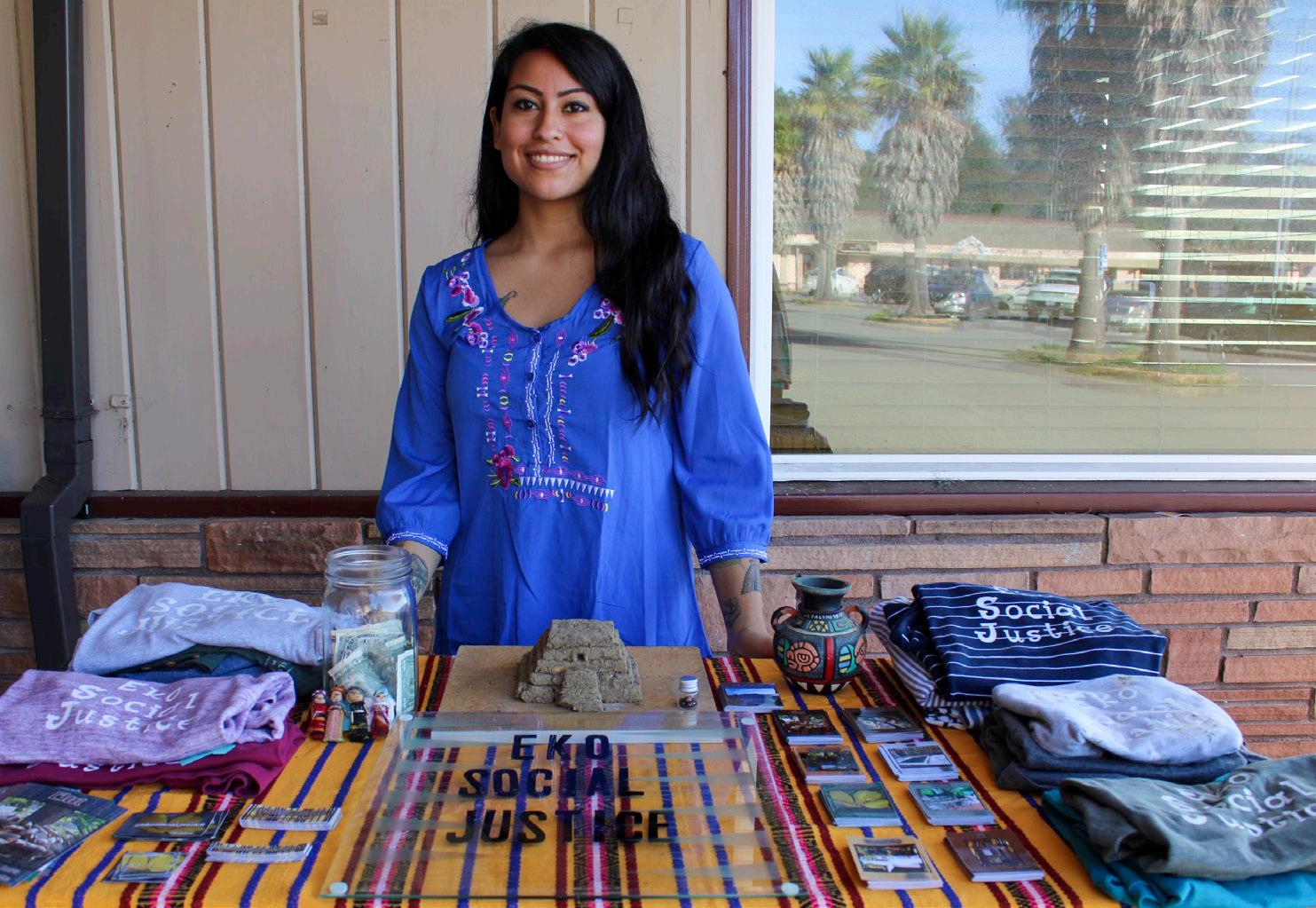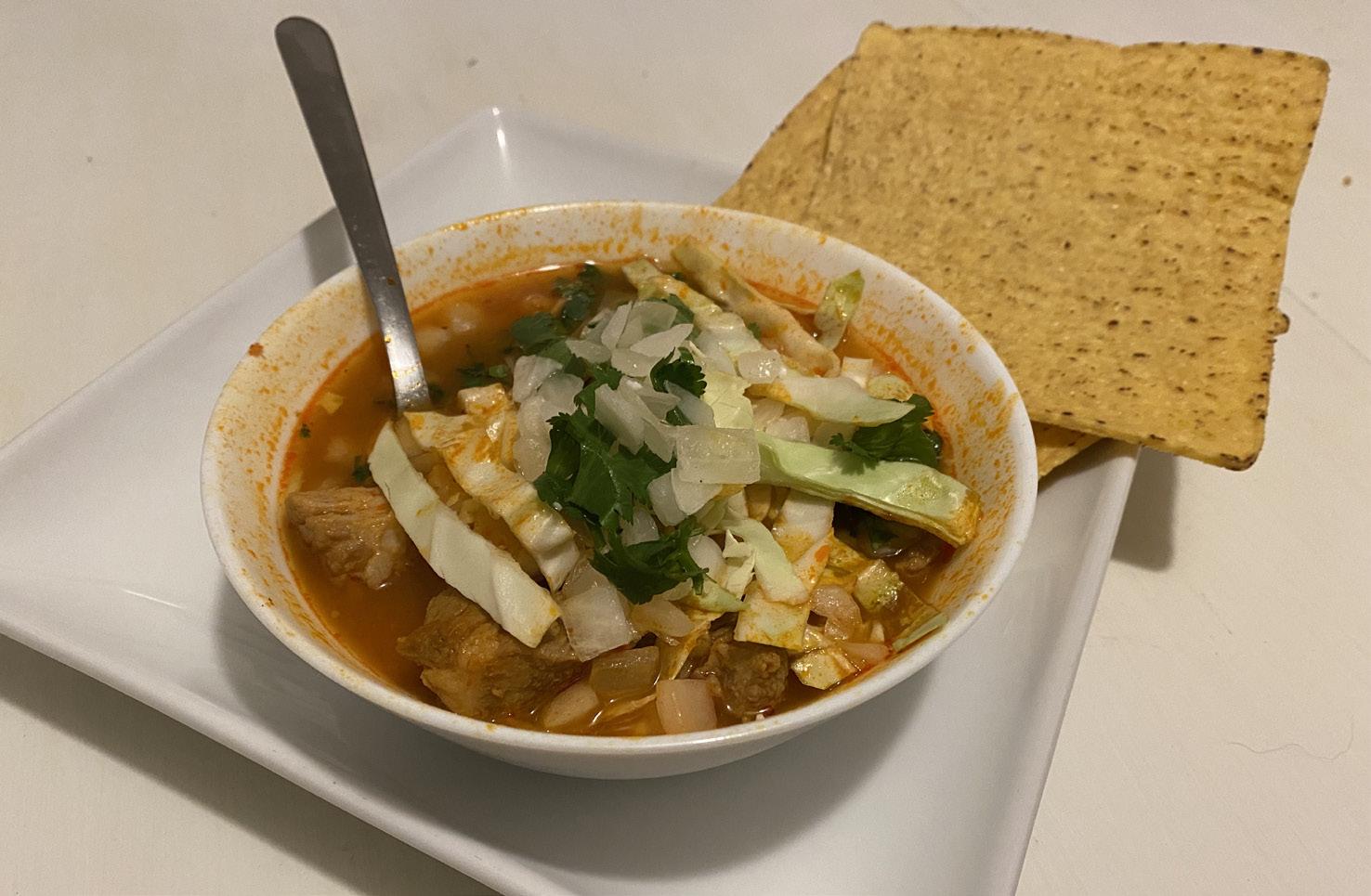
16 minute read
Students question HSU polytechnic plan
from December 2021
by El Leñador
News Noticias
Graduate students raise questions about polytechnic plan
Advertisement
by Frank Rocha
Humboldt State University graduate students presented a collective letter at the Polytechnic Forum on Nov. 19 in response to the lack of Native representation in HSU’s plan to transition into a polytechnic university.
The meeting was hosted by Jenn Capps, provost and vice president for academic affairs, and Sherie Gordon, chief of staff. It discussed polytechnic designation, implementation updates, and working group presentations. The presentations included topics like facilities, budget, finance, reporting, and communications.
Capps explained that she and HSU President Tom Jackson, Jr. spent a lot of time with board members and presidents from other campuses, and mentioned that everyone seems to find the change to be complimentary. “It was really well received; folks were just absolutely complimentary of all the work that we’ve done,” said Capps. “We’ve come together in a collaborative way, that we’ve engaged our external partners, we’ve engaged students, faculty, staff, really everyone towards this common vision.” It didn’t seem that way after a portion of a collective letter was presented by Marlene’ Dusek, Environment & Community graduate student and staff at the Indian Tribal & Educational Personnel Program (ITEPP). The collective letter was written by nine current HSU graduate students including Dusek, Amy Ithurburn, Carrie Tully, Amada Lang, Aleena Church, Molly Conso, Melissa Whipkey, Sara Goodrich andVanessa Tenorio. They presented eleven points for HSU to improve upon as the institution transitions to a Polytechnic University. The letter was a response to the HSU’s Polytechnic Prospectus on Sept. 1. They point out that tribes are mentioned over 75 times in the prospectus, while “Indigenous’’ and “Native American” are mentioned 39 and 37 times. In total, the prospectus engages with terms like “tribe,” “Indigenous,” “Native American,” “Indian,” and Traditional Ecological Knowledge a total of 198 times. In the letter, students express that they are “tired of feeling left out
and left behind in these important changes and conversations.”
“This kind of performative act is not something that we as students want to continue to see at Humboldt State University,” said Church. “And we are here to make sure our voices are heard in that we demand equal funding and representation as well.”
The letter also stated that the Polytechnic Prospectus left out new hires in the Native American Studies department, the need for Indigenous programs to have prominent space on campus and equal voting power on hiring, promotion, tenure committees, and dismissal procedures in selecting and dismissing HSU staff, faculty, and administration. The collective believes that Traditional Ecological Knowledge (TEK) and Indigenous communities are key parts of what elevates HSU’s development into a polytechnic university for the next century. TEK refers to evolving knowledge acquired by indigenous and local peoples over time.
Many were in support of HSU’s Council of American Indian Faculty and Staff who pointed out that there is no representation of Indigenous peoples at an administrative level and that HSU does not currently have a tribal liaison or tribal affairs office. “Traditional Knowledge, indigenous knowledge, are going to be infused throughout the curriculum,” said Capps. “And really connecting directly, also with tribal nations and tribal chairpersons, as well as different constituency groups.” TK refers to knowledge systems embedded in cultural traditions of regional, indigenous, or local communities. Others in the collective asked if the funding for Indigenous science will be made available to students in the plan. “The funding for first and sort of second year funding is to inform and to support programs for our 2023 launch that is illustrated in our prospectus,” said Capps. “So, Indigenous science, while a good idea, will probably end up as a program we offer in the future.” Some of the group’s questions weren’t given clear answers to how TEK is going to be infused throughout the curriculum, how the institution is connecting with tribal nations and tribal chairpersons, and when exactly will Indigenous science be a class at HSU. “I’ve put out a couple of requests to meet with different student groups and haven’t gotten a ton of interest back,” said Capps. “So, I’m so grateful to hear that you’re interested and want to engage, so that’s exciting, so thank you for that.”
According to the graduate students, the collective letter was emailed to the HSU administration and Jenn Capps the morning of, before the forum began. Both HSU and Capps have yet to respond to the collective of graduate students as of Nov. 30. Currently, the collective of students are trying to organize another meeting with Jenn Capps and the people behind the name change in order to further discuss the topic.
If you want to read the collective’s letter, go to our online version of this article on ellenadornews.com
El Leñador requested a comment from President Tom Jackson’s Office and Jenn Capps, provost and vice president for academic affairs. As of Dec.1, they have not responded.
On Nov. 19 HSU held an open forum to discuss plans for the university's polytechnic transition plan. | Photo by El Leñador staff


Life & Arts La Vida y Los Artes
Student starts Eko Social Justice to help El Salvador Estudiante inicia Eko Social Justice para ayudar a El Salvador
by Danielle Hendrickson
HSU senior Klara Hernandez is passionate about the environment and social justice. Before becoming an HSU student in 2019, she founded Eko Social Justice, an organization with a mission to make the world a better place. Her organization started with a focus on the environment but has since shifted to help feed the houseless community in Humboldt, and provide supplies for Salvadorans in El Salvador and Los Angeles.
Hernandez is an environmental studies major and is one of the current co-directors at Campus Center for Appropriate Technology (CCAT), a center at HSU practicing and teaching sustainability.
Hernandez uses her education and background in community organizing to help those in need.
“When my family came to America, they started from nothing,” Hernandez said. “With the privilege of being here I have to help my people. I know with the education from Humboldt State that I can do it.”
Hernandez’s parents were born in El Salvador and escaped during the civil war when they were young. Hernandez says helping out her home country and fellow Salvadorans is her biggest goal and motivation.
Her first plan of action after graduating is to move to L.A. and get familiar with the community to see what causes need help. Notably, L.A. has one of the largest Salvadoran communities in the U.S. She plans on hosting events and protests for the Salvadoran-American community.
“It’s my dream to help El Salvador and focus on it, but shoot if I can have an organization that helps other countries, then the more the better. I’m going to see where I go because who knows with this life,” Hernandez said.
Hernandez hopes to help with the environmental and social laws in El Salvador. At the end of December, she will travel there to visit family and give out care packages to those in need.
Hernandez’s first project with Eko Social Justice was in 2018, where she collected bottles and cans from her mother’s church and various households and took them to a recycling center. The money raised was used to create care packages for unhoused individuals.
While she lives in Humboldt, she raises funds for Eko’s projects by selling stickers and repurposing thrifted shirts with her logo at Brainwash Thrift.
“The work she does for Indigenous communities is wonderful,” said Kait Angus, owner of Brainwash Thrift. “She’s a great person and overall a pleasure to work with.”
As part of Eko Social Justice, Hernandez began making vegan burritos for the unhoused community in the L.A. area and continued to do so when she came to Humboldt in 2019. To be as sustainable as possible, she uses 100% recycled aluminum foil to wrap the burritos and buys food in bulk. Fellow CCAT co-director Abbey
Ramirez admires Hernandez’s organization and looks forward to what she will accomplish in the future. “She is a really good example of what a student is capable of doing on their own to be the change they wish to see in the world,” Ramirez said. “She’s really exemplary for a lot of students who wish to do the same type of work.” What keeps Hernandez inspired is her hope for a better world for her nieces and nephews. While she is currently the only member of Eko Social Justice, she hopes to expand in the future and bring on interns and employees. For questions and a look at upcoming projects, she can be found on Instagram at @ekosocialjustice. por Danielle Hendrickson traducido por Alexandra Gonzalez
Klara Hernandez, estudiante de último año de HSU, es apasionada del medio ambiente y la justicia social. Antes de convertirse en estudiante de HSU en 2019, fundó Eko Social Justice, una organización con la misión de hacer del mundo un lugar mejor. Su organización comenzó con un enfoque en el medio ambiente, pero desde entonces ha cambiado a ayudar a alimentar a la comunidad sin hogar en Humboldt. También ayuda a proporcionar suministros para los salvadoreños en El Salvador y Los Ángeles.
Hernández se especializa en estudios ambientales y es uno de los codirectores actuales del Centro Campus para Tecnología Apropiada (CCAT), un centro en HSU que practica y enseña sostenibilidad.
Hernandez usa su educación y experiencia en organización comunitaria para ayudar a los necesitados.
“Cuando mi familia vino a Estados Unidos, comenzaron desde la nada,” dijo Hernández. “Con el privilegio de estar aquí tengo que ayudar a mi gente. Sé que con la educación del estado de Humboldt puedo hacerlo.”
Los padres de Hernández nacieron en El Salvador y escaparon durante la guerra civil cuando eran jóvenes. Hernández dice que ayudar a su país de origen es su mayor objetivo y motivación.
Su primer plan de acción después de graduarse es mudarse a Los Ángeles y familiarizarse con la comunidad para ver qué causas necesitan ayuda. En particular, L.A. tiene una de las comunidades salvadoreñas más grandes de los EE. UU. Ella planea organizar eventos y protestas para la comunidad salvadoreña-estadounidense. “Mi sueño es ayudar a El Salvador y concentrarme en él, pero si puedo tener una organización que ayuda a otros países, mientras más, mejor,” dice Hernandez. “Voy a ver a dónde voy porque quién sabe con esta vida.”
Hernández espera ayudar con las leyes ambientales y sociales en El Salvador. A finales de diciembre, viajará allí para visitar a su familia y entregar paquetes de atención a los necesitados.
El primer proyecto de Hernández con Eko Social Justice fue en 2018, donde recogió botellas y latas de la iglesia de su madre y de varios hogares y las llevó a un centro de reciclaje. El dinero recaudado se utilizó para crear paquetes de ayuda para personas sin vivienda.
Mientras vive en Humboldt, recauda fondos para los proyectos de Eko vendiendo pegatinas y reutilizando camisas de segunda mano con su logo en Brainwash Thrift, una tienda de segunda mano en Arcata.
“El trabajo que hace para las comunidades indígenas es maravilloso”, dijo Kait Angus, propietaria de Brainwash Thrift. “Es una gran persona y, en general, es un placer trabajar con ella”.
Como parte de Eko Social Justice, Hernández comenzó a hacer burritos veganos para la comunidad sin vivienda en el área de Los Ángeles y continuó haciéndolo cuando llegó a Humboldt en 2019. Para ser lo más sostenible posible, utiliza papel de aluminio 100% reciclado para envolver los burritos y compra comida a granel.
La compañera codirectora de CCAT, Abbey Ramirez, admira la organización de Hernández y espera con ansias lo que logrará en el futuro.
“Ella es un muy buen ejemplo de lo que un estudiante es capaz de hacer por sí mismo para ser el cambio que desea ver en el mundo,” dijo Ramírez. “Ella es realmente ejemplar para muchos estudiantes que desean hacer el mismo tipo de trabajo.”z
Lo que mantiene a Hernández inspirada es su esperanza de un mundo mejor para sus sobrinas y sobrinos. Actualmente es la única miembro de Eko Social Justice, espera expandirse en el futuro y traer pasantes y empleados. Para preguntas y ver los próximos proyectos, se puede encontrar en Instagram en @ekosocialjustice.
Klara Hernandez with her organization merch at her first tabling event at Brainswash Thrift. | Photo courtsey of Klara Hernandez “ It’s my dream to help El Salvador and focus on it...” — Klara Hernandez

Holiday Pozole Recipe Receta de Pozole navideño
by Leslie Arjon-Rodriguez
Having a warm bowl of pozole when it is cold outside is the most comforting feeling.
Smelling the chiles in the blender throughout the house brings back many memories of when my mom would make pozole for my siblings and I. So being far from home has been tough especially when it comes to missing those home cooked meals. I was raised in a Mexican household where food is a huge part of our culture. For my family, pozole is the most important meal during the holidays. When my mom was younger my grandma would make pozole during the winter time.
Recently my mom gave me the family recipe and I really enjoyed making it. There are two types of pozole; red and green. I have tried both but personally my favorite is red pozole because of how much it reminds me of home. It’s also an affordable meal that can feed many. por Leslie Arjon-Rodriguez traducido por Fernanda Delgado
Red Pork Pozole
5 servings
Ingredients:
• Soup • 3 - 4 lbs pork shoulder boneless or with bone, cubed 2 to 3 inches • 11 cups water • 5 dried guajillo or ancho chiles, or a combination of both • 2 cups of warm water in a bowl • Salt to taste • 3 cloves of garlic • 2 (29 ounce cans) of white hominy • 1 teaspoon of oregano • ½ of an onion • To garnish (Optional) : • Shredded cabbage • Thinly sliced radishes • Chopped avocados • Wedges of lime • Cilantro • Onions • Tostadas
Directions:
For this pozole recipe you are going to start off by cutting your pork shoulder into 2 and 3 inch cubes, the fat and bone on your pork is what is going to give your pozole flavor so don’t cut around it. You can include some and/or throw the rest away.
In a medium pot, add enough water to cover the meat. Cover the pot and place it over medium heat, bringing it to a boil. You want the meat to be somewhat cooked before putting the hominy and chile in, so give it a stir and make sure the cubes are brownish before you add the hominy.
Once the meat has browned, open your 2 cans of hominy and add.
Cut the stems of the chiles and take the seeds out. After that, put the chiles in a bowl with 2 cups of warm water. Once they have sat in the bowl for 5 minutes, add the chiles to a blender with half of the water you used to soak them in, a quarter of an onion and a pinch of salt. Blend for 2 minutes.
Once blended, grab a strainer and hold it over the pot. Strain the blended chiles into the pot. If the pozole is not red enough, add some water to the strainer to help get more of the color of the chiles out.
After chiles and hominy has been added, cover the pot on low heat. Let it boil for 30 - 45 minutes. Stir occasionally and make sure the meat is fully cooked and hominy is chewable.
Bowl up your pozole and garnish to taste. Pair up with tostadas and enjoy.
My mom has always said that the pozole always tastes best the following day and I couldn’t agree with her more.

This is how your plate should look like once served with toppings. Así es como debe ser su plato cuando vez servido.| Photos by Leslie Arjon-Rodriguez
Tener un plato caliente de pozole cuando hace frío es la sensación más reconfortable. Oler los chiles en la licuadora por toda la casa me trae muchos recuerdos de cuando mi mamá preparaba pozole para mis hermanos y para mí. Estar lejos de casa ha sido especialmente difícil cuando se trata de extrañar la comida casera.
Crecí en un hogar mexicano en el cual la comida ocupa un gran lugar en nuestra cultura. Para mi familia, el pozole es la comida más importante durante las fiestas. Cuando mi mamá era joven, mi abuela hacía pozole durante el invierno.
Recientemente mi mamá me dio la receta de la familia y disfruté mucho al hacerla. Hay dos tipos de pozole, rojo y verde. He probado ambos, pero personalmente mi favorito es el pozole rojo por lo mucho que me recuerda a casa. También es una comida económica y rendidora.
Pozole rojo de puerco
Para 5 porciones
Ingredientes:
• Sopa • 3 - 4 libras de paleta de puerco con o sin hueso, cortada en cubos de 2 a 3 pulgadas • 11 tazas de agua • 5 chiles guajillo secos o chiles ancho, o una combinación de ambos • 2 tazas de agua tibia en un bol • Sal a gusto • 3 dientes de ajo • 2 (latas de 29 onzas) de maíz blanco • 1 cucharadita de orégano • ½ cebolla • Para adornar (Opcional) : • Repollo rallado • Rábanos cortados en finas rodajas • Aguacates picados • Rodajas de lima • Cilantro • Cebollas • Tostadas
Preparación:
Para esta receta de pozole comenzarás cortando la paleta de puerco en cubos de 2 a 3 pulgadas, la grasa y el hueso del puerco es lo que le dará sabor al pozole, por lo tanto no los cortes. Puedes poner algunos y tirar el resto.
En una olla mediana, añade suficiente agua como para cubrir la carne. Tapa la olla y colócala a fuego lento hasta que hierva. Quieres que la carne esté algo cocida antes de poner el maíz blanco y los chiles, a si que revuelve y asegurate de que los cubos estén marrones antes de agregar el maíz.
Una vez que la carne esté marrón, abre 2 latas de maíz y agregalas.
Corta los tallos de los chiles y saca las semillas. Luego, pone los chiles en un bol con dos tazas de agua tibia.
Una vez que hayan reposado en el bol por 5 minutos, coloca los chiles en la licuadora con la mitad del agua que usaste para remojarlos, un cuarto de cebolla y una pizca de sal. Licua por dos minutos.
Una vez licuados, agarra un colador y sostenlo sobre la olla. Cuela los chiles licuados en la olla. Si el pozole no está lo suficientemente rojo, agrega un poco de agua al colador para ayudar a sacar más color de los chiles.
Después de que los chiles y el maíz fueron agregados, tapa la olla y ponla a fuego lento. Déjala hervir por 30 - 40 minutos. Revuelve ocasionalmente y asegúrate de que la carne está totalmente cocida y el maíz sea masticable.
Colócalo en un bol y decora a gusto. Combinaló con tostadas y disfruta.
Mi mamá siempre ha dicho que el pozole siempre sabe mejor al día siguiente y no podría estar más de acuerdo.





